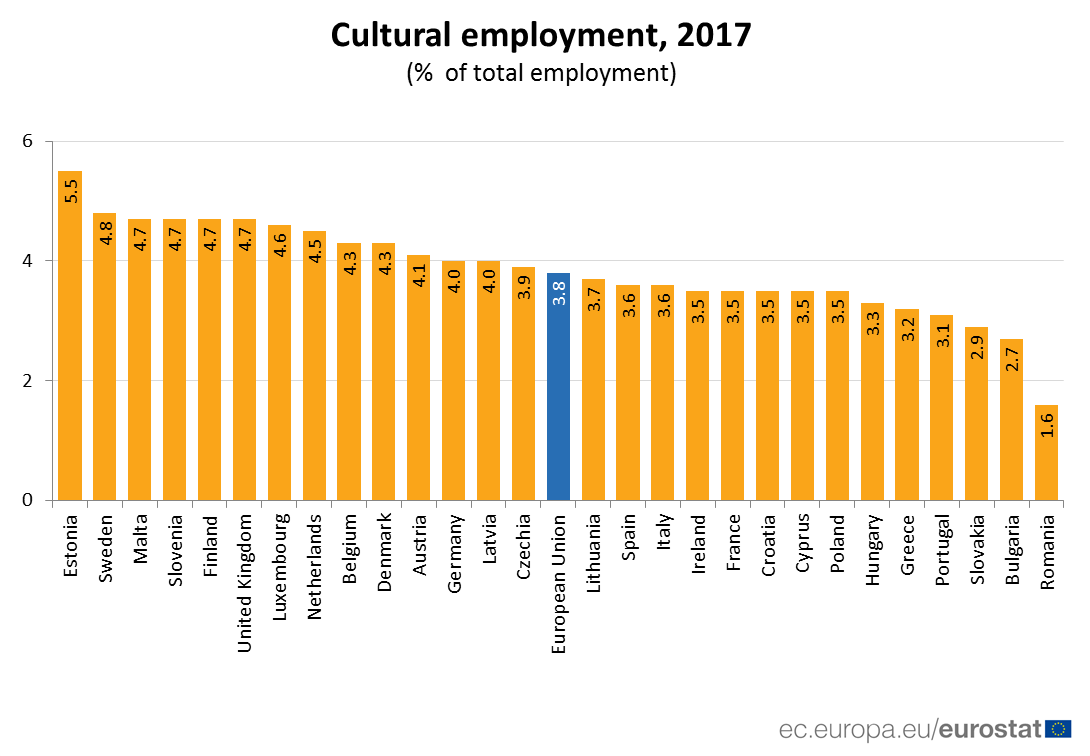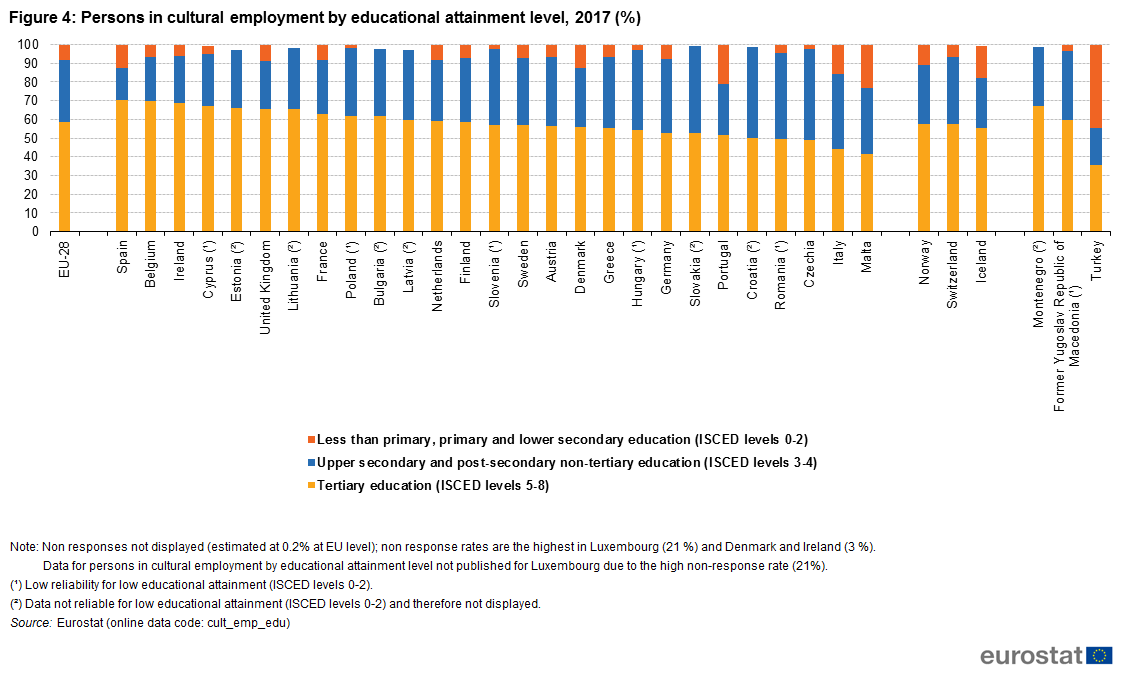For the seventh year in a row, Romania is the tail-ender in terms of percentage of people employed in culture (1.6%), according to the latest report released by Eurostat. In 2017 around 8.7 million people were working in a cultural sector or occupation in the European Union, which accounts for 3.8% of the total number of people in employment.
While employment in the cultural sector shows a small increase over the past seven years, it’s still the lowest in the EU, unchanged from the previous year, but showing a 0.1% increase compared to 2015, and a 0.2% compared to 2011 and 2013. However, that’s still way below Iceland, which topped the 2017 chart with 5.8%, followed by Estonia with 5.5%, the Eurostat data reads.

By contrast, neighboring Hungary has seen its cultural employment rate drop 0.3% to 3.3% compared to 2016, just like Bulgaria, although the drop was just 0.1% compared to the previous year, when cultural employment hit the 2.8% mark.
In 2017, almost 60% of people working in culture in the EU had higher education, almost double the percentage in the overall economy. When looking at total employment, 34% of all employed had higher education. In Romania, the percentage of higher education in cultural employment was 50%, according to Eurostat, a few percentage points lower than Hungary and more than 10% lower than Bulgaria.

Cultural employment relates to activities such as creative arts, entertainment activities, libraries, archives, museums, and other cultural activities, publishing of books, periodicals, printing, programming and broadcasting activities, motion picture, video and television program production, sound recording, and specialized design activities. In terms of occupation, writers, musicians, journalists, actors, dancers, librarians, handicraft workers, and graphic designers all fit into this category.